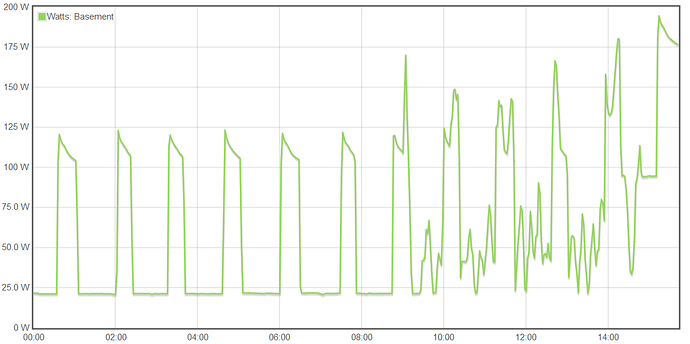I have a 2800 sq ft 2 story house, 40-switch breaker box presently with 31 occupied, looking into adding at least two more due to regular overloads / breaker flips needed in a specific bedroom and the garage. No solar but that may be in eventual future - honestly more interested in power storage first since we live in a hurricane zone. I am a complete novice with electricity and engineering in general, but would like to learn more. My tech skills are more on the SQL / database side (largely self-taught / Googled) although I am actually pursuing an associate degree in IT on part-time basis - concepts of gits and APIs still very new to me!
Sooo…what all do I need to buy to get started here? Am a bit overwhelmed at the moment. If someone could hook me up with a shopping list / quick orientation so I can hit the ground running with the wiki page, I sure would appreciate it…! Or am I out of my depth with no electrical knowledge / limited programming skills and should just consider going the Sense route?
Oh, and credit to Amazon user “Jonathan Frederick” for his review on the Sense page there that led me here!
This is a common inquiry, and all the answers are the same but different. IoTaWatt is very versatile and can accurately measure individual appliances immediately. That said, you need to know what you want to measure and install passive sensors for each of those circuits.
There is complete documentation here. It reads pretty quickly. I’m guessing you are in North America, so take a look at the split-phase power discussion to understand better what is inside your load-center. Then run through the first few installation instructions to see what’s involved.
Here are several other recent threads where folks asked the same question:
https://community.iotawatt.com/t/equipment-needed-for-200a-residential-us-installation/1975
https://community.iotawatt.com/t/equipment-recommendations-for-us-residential-200a/1998/10
Assuming you are in North America, at a minimum you would need the Base unit, power supply and AC reference transformer included in the North America Bundle and two current transformers for the mains. After that, you can add up to 12 more current transformers to measure individual circuits or groups of circuits. So it requires some planning to determine what, if any, individual circuits you want to monitor (including solar), and the appropriate size CT for each (50Amp or 100Amp).
1 Like
Thank you, will review and digest all material as time permits. Quick question if you do not mind - I would want to measure as much as possible (whole house) - however as I mentioned I have 31 of 40 spots occupied on breaker box. Range, dryer, AC and water heater take up 2x slots, then 23 additional slots and I will be adding at least two more. Does this mean that I will need 2+ separate base units in order to monitor the entire house (if each one can monitor 14 circuits only)?
That’s the same question posed in the two other recent inquiries cited above. Short answer is that in my experience the 80-20 rule applies. ~80% of your usage will be attributable to ~20% of your circuits.
The topic of 240V circuits is also addressed in both the cited examples and the documentation. The short answer is “depends”. There are several ways to monitor those circuits with one CT and other ways to do it with two. Depends on if the appliance uses 2 wires or three.
Regardless of how many circuits you have, the two mains CTs will accurately measure the whole house usage and any net resulting from solar generation. So it’s just a matter of how many individual circuits you can/want to measure. The documentation explains how multiple circuits can be combined into one input.
My advice is always to start with one unit, monitor the major appliances and whatever else is interesting, and see if that provides sufficient data to understand your consumption. You can always add another unit if need be. Just because an input includes multiple circuits doesn’t mean you won’t know the details. Here’s my basement today. You can see that there is a steady 20W that is constant 24/7 from transformers and controls. The freezer cycles at about 90W with about a 30% duty cycle, and starting at about 9am the circulator pump on the solar hot water started to cycle (mostly cloudy until about 3pm.
After years of doing this, I can say that I regularly look at four-five circuits in my home to gauge usage.
1 Like
FWIW, i’ve had Sense for about a year and am looking at adding or changing to IoTaWatt. Sense is great for showing me total, real time, power usage, but it has not been successful in sniffing out individual appliances/devices. it’s found a vacuum, my miter saw, garage door opener, trash compacter, water heater and some other sort of useless crap, but not my heat pumps, hot tub, well pump, water pump, stove, ovens… Basically, Sense has not succeeded in finding much of anything that actually is using a lot of power and has been really disappointing.
So, i’m looking at IoTaWatt. If i do go this route, it will be interesting to post a comparison between the 2 after several months. But, the impression i get is that with IoTaWatt I can directly monitor the dozen circuits in my house that serve the high power draw devices. I’m pretty sure I can predict which circuits those will be.
1 Like
